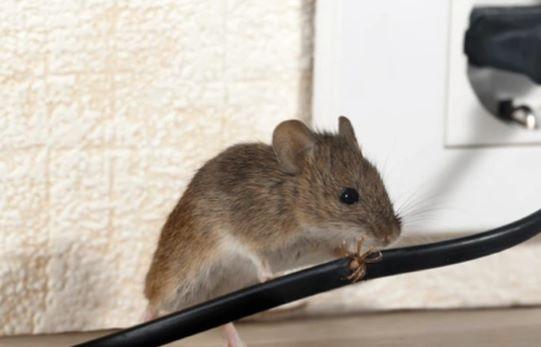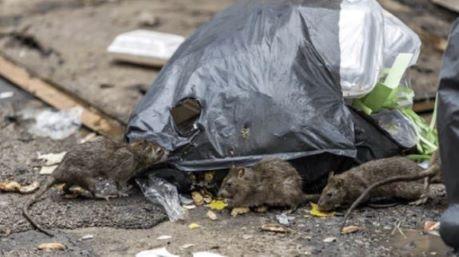Mouse and Rat advice
Mice and rats are two of the most common pests in the home
House Mouse
Adult body length, not including tail, typically 7.5 - 10cm.

Brown Rat
Adult body length, not including tail, typically 20- 25cm.

How to tell if you have mice or rats:
- Mice and rats are normally active at night and you may not see them during the day.
- Key signs you have mice are finding partially nibbled food, packaging or other materials and small droppings which appear like black grains of rice. Fresh droppings will be soft, old droppings will be dried out. You may also find nests, which look like balls of material loosely woven together.
- The most common sign of rats are their droppings which look like black raisins, along with evidence of gnawing, tracks, burrows and nests. Holes that are frequently used by rats and mice may have black smear marks around them caused by the rodents regularly brushing against the edges.
- Heavy infestations within properties can cause a musky odour.
Health and safety risks from mice and rats
- Mice and rats can carry a wide range of diseases. These can be passed on to humans by contaminating food or surfaces with urine, droppings and hairs.
- Rats, in particular, can pass on Leptospirosis, a disease that can lead to Weil's disease which can be fatal to humans and other mammals.
- Rats and mice can also cause structural damage to property. Their incisor teeth continually grow therefore to keep them from overgrowing they regularly gnaw materials including electric cables, wiring and pipework, which could cause fire, electrocution, or flooding.
Mice and rat infestations can be avoided by blocking access into your home:
- Check air bricks are in place and intact. Mice can squeeze through holes no bigger than the diameter of a pencil. If mice can fit through your air bricks then you can prevent this by fitting a wire mesh over them but you must ensure you do not block them totally as ventilation is still needed to that area.
- Look for access points, typically around gas, electricity, water and waste pipes. Wire wool is an effective material to block small holes since it is inexpensive and rodents will not chew through the material as they can do with expanding foam. Ensure that the wire wool is fitted tightly to prevent rodents pulling/pushing the material out. Wire wool can be purchased in any DIY store.
- Make sure drain covers and grilles are in place and not damaged.
- Check that doors fit tightly, fit cone guards and balloon guards to drainpipes to stop rats climbing up – these are available from hardware or DIY stores.
- Gaps beneath garage doors can be blocked by fitting purpose made hard rubber strips at their base.
Improved hygiene will discourage mice and rats by restricting their food:
- Store food carefully so mice and rats don't have access.
- Sweep up spills as soon as they happen.
- Store your food waste in pest proof storage, such as a lidded bin, and ensure it is regularly collected.
- Clean under work units and other areas where food debris can build up.
- Keep the garden free of food debris.
- Do not compost meat, fish, bones, bread or any cooked foods, as these attract vermin. If you do compost garden cuttings and raw vegetable peelings, then ensure you use appropriate compost bins to restrict rodent access.
- Avoid over feeding wild birds or other wildlife as rodents are likely to be attracted to your garden by the food. Use bird feeders with lips to catch crumbs and do not place them next to walls or beneath overhanging branches which rodents may use to climb onto them. Do not feed birds towards the end of the day as the food will be present all night.
Controlling mice and rats yourself
The first step to controlling mice and rats is to find out where they are living and feeding, and their routes between these areas. Look for:
- holes and burrows
- damage and gnawing
- droppings
- footprints
- sightings
- a musky smell
You should permanently seal all access holes and routes as well as use traps and/or poison baiting.
- Treatments by professional pest contractors are more effective than DIY treatments. If you use a contractor ensure that they are members of the British Pest Control Association.
- If you carry out your own treatment you must follow all the safety guidance on the packaging of the produce and ensure that poison bait is not left in a condition where non-target species can access it. Bait left outside therefore must be in secure bait boxes. It is an offence to poison creatures for which the bait was not created for, even accidentally.
- Regularly check the level of bait used to see if any or how much has been taken, and top up as appropriate.
- If you use traps, peanut butter can be an effective bait however if this doesn’t work try a variety of food stuffs, especially ones which you know the rodents are already eating.
- Place traps and bait in areas of activity along known/suspected routes the rodents regularly use. Rats suffer from a fear of new things (Neophobia) so it may take a few days before they become brave enough to approach newly laid bait/traps.

